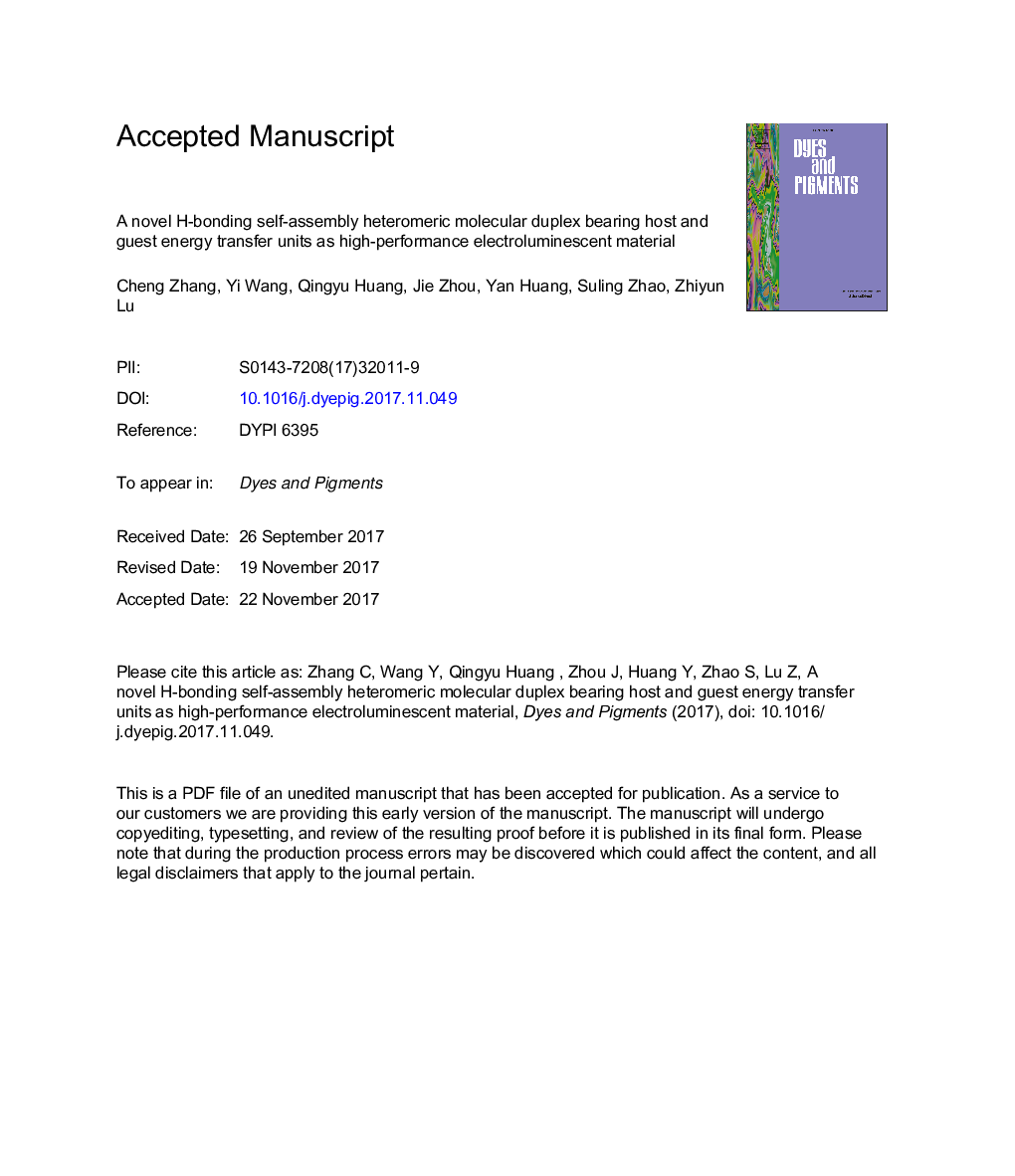| Article ID | Journal | Published Year | Pages | File Type |
|---|---|---|---|---|
| 6599619 | Dyes and Pigments | 2018 | 37 Pages |
Abstract
Two oligoamide strands with complementary H-bonding sequences bearing 4HB-NIM and 4HB-CzNI were synthesized. 4HB-NIM and 4HB-CzNI could be self-assembled into a heterodimeric dyad (namely 4HB-NIM-CzNI)via quadruple H-bond interactions. Photoluminescence measurements revealed that in both dilute solution and doped film states, more efficient host-guest energy transfer processes could be observed in the duplex 4HB-NIM-CzNI than the physical blends of the small molecular guest reference compound NIM and the host single strand 4HB-CzNI, which should be attributed to the shortened spatial distances in 4HB-NIM-CzNI. In addition, in comparison with NIM and the guest single strand 4HB-NIM, 4HB-NIM-CzNI shows much higher photoluminescence quantum yield [0.53 vs 0.04 (NIM) or 0.35 (4HB-NIM)] in neat-film state, indicative of the more alleviated concentration quenching of the guest fluorophore in 4HB-NIM-CzNI than 4HB-NIM and NIM. As a consequence, an organic light-emitting diode (OLED) with 4HB-NIM-CzNI as the light-emitting dopant shows much more improved electroluminescent performance than its 4HB-NIM-based reference OLED: with lower turn-on voltage (5.0 vs 5.9 V), higher maximum luminance (5260 vs 2980 cd mâ2) and current efficiency (3.5 vs 3.0 cd Aâ1) as well as lower efficiency roll-off. All these results indicated that the integration of both host and guest fluorophores into H-bonding self-assembled material should be an effective strategy to construct high performance supramolecular electroluminescent materials.
Related Topics
Physical Sciences and Engineering
Chemical Engineering
Chemical Engineering (General)
Authors
Cheng Zhang, Yi Wang, Qingyu Huang, Jie Zhou, Yan Huang, Suling Zhao, Zhiyun Lu,
